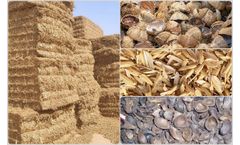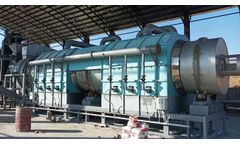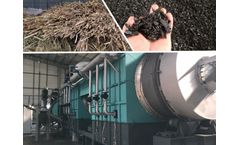Refine by
Lignocellulose Articles & Analysis
23 articles found
In summary, dry, clean, and small-sized lignocellulosic biomass is ideal for biochar production. When selecting a biochar feedstock, consider the following: local availability, transportation costs, pretreatment requirements, and the intended use of the final product. ...
Feedstock Versatility and Waste Valorization Biochar equipment accommodates a broad range of lignocellulosic waste materials, including rice husk, coconut shells, sawdust, sugarcane bagasse, and even organic municipal waste. ...
Biofuel Production: Enzymes are pivotal in the conversion of lignocellulosic biomass into biofuels. Cellulases and hemicellulases decompose complex carbohydrates into simpler sugars, which are subsequently fermented into ethanol. ...
By efficiently hydrolyzing cellulose and hemicellulose, Driselase can help convert lignocellulosic feedstocks, such as agricultural residues and forestry waste, into fermentable sugars. ...
Characteristics of Coconut Shell Waste Composition and Physical Properties Fibrous Structure and Nutrient Content: Coconut shells exhibit a fibrous structure, rich in lignocellulosic materials. This composition poses challenges in decomposition, requiring specialized methods for effective utilization. ...
Sawdust and wood chips, often residues from the timber industry, are well-known in the carbonization game. Their lignocellulosic structure lends itself to the production of high-quality biochar and activated carbon. ...
Biomass is definitely the term for trees, straw, and lignocellulose, along with other waste materials which are not burned, like the waste through the farming industry and livestock manure. ...
In the future, a BioBANG technology will support the substrate digestion of the Blum biogas plant in the Vulkaneifel New installation of BioBANG in Renè Blum’s biogas plant in the Vulkaneifel district of the Rhineland. BioBANG, installed in recirculation on the main digester, ensures greater digestion of the most difficult substrates. This not only increases the biogas production, ...
Abstract Lignocellulose represents a potential supply of sustainable feedstock for the production of biofuels and chemicals. ...
BySusChem
The 4% NaOH-treated group had the highest methane yield of 117.7 mL/g VS added, which was 144% higher compared to the no NaOH-treated group, and the highest net energy recovery. Higher rate of lignocellulose breakage and higher process stability of anaerobic digestion facilitated methane production in the NaOH-pretreated groups. ...
This work focused on applying a thermochemical pretreatment with NaOH on two lignocellulosic residues. The experiments were performed according to a 24 factorial design. ...
Each of the four Bio4Energy research proposals, applied projects expected to result in methods or processes for industry to incorporate in their production within a few years, aim to add one small piece of the puzzle of such a transition: Efficient conversion of forest biomass insoluble polyesters with potential use in lignocellulosic feedstock biorefineries; Rapid drying of ...
These techniques were tested in batch experiments employing the liquid fraction of a digestate originating from the AD of a substrate mix containing lignocellulose, cattle manure and fish industrial waste. The concentration of NH4+-N in this digestate was 2,300 mg L−1. ...
In this study, pressed pericarp fibres (PPFs) were subjected to chemical pretreatment for bioconversion of lignocellulosic biomass to fermentable sugars. The effectiveness and comparison between pretreatments using acid (HCl) and alkaline (NaOH) to reduce the lignin content was studied. ...
Due to the chemical and physical structure of a lignocellulosic biomass, its anaerobic digestion (AD) is a slow and difficult process. ...
Moreover, those fungi are thought to be among the most efficient and robust known digesters of "lignocellulosic" material — that is, not only cellulose but also other materials that occur with it, notably hemicellulose and lignin, polymers in plant cell walls that are extremely tough and can block access to the cellulose itself, further complicating its breakdown. ...
Mixed hardwood, forest residues, pulp and paper wastes, and switch grasses are few of the lignocellulosic sources that can be tapped to produce industrial and consumer bioproducts. ...
KOH chemical activation of four lignocellulosic biomass materials, two sludges from pulp mills, one sludge for a linerboard mill, and cow manure, were investigated experimentally, with a focus on the effects of KOH/biomass ratio (1/1, 1.5/1 and 2/1), activation temperature (400–600°C) and activation time (1 to 2 h) on the development of porosity. ...
Digestion and fermentation of lignocellulosic biomass (i.e., structural carbohydrates) are predicted to deliver higher yields of energy per hectare than sugar and starch (nonstructural carbohydrates), yet little research on genetic variation in crop feedstock biomass traits has been conducted. ...
The capacity to simultaneously process and utilize a range of carbohydrates associated with biomass feedstocks is a highly desirable feature of this lignocellulose-utilizing, biofuel-producing bacterium. ...














